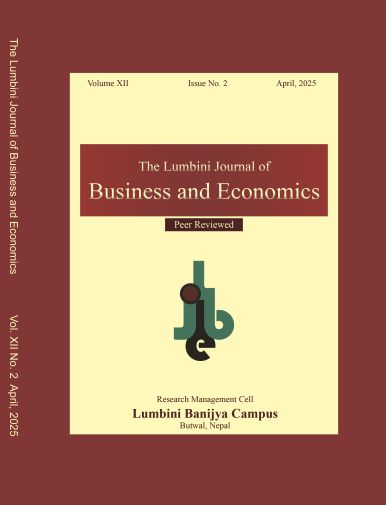Impact of Emotional Intelligence on Employee Performance in commercial banks in Butwal Sub Metropolitan City, Nepal
DOI:
https://doi.org/10.3126/ljbe.v12i2.77441Keywords:
Emotional intelligence, employee performance, work quality, teamwork, collaborationAbstract
Purpose: This paper aims to investigate and explore the relationship between emotional intelligence and employee performance within the context of commercial banks.
Methods: This research was conducted by using descriptive and causal comparative research design. Data collection was executed through purposive sampling method, distributing 300 questionnaires from which 80.33% responses were obtained from employees of commercial banks. The study utilized an adopted questionnaire through seven-point Likert scale. complemented by a comprehensive array of statistical measures, including Mean, Standard Deviation, independent t test, parametric, non-parametric and Correlation for robust data analysis.
Results: The result reveals that empathy has significant impact on employee performance as well as relationship management also have significant impact on employee performance. It is also found that the female employees has better opinion towards emotional intelligence in comparison to male employees.
Conclusion: This study concludes that managers can enhance employee performance through emotional intelligence by prioritizing employee appreciation, enforcing positive relationships between supervisors and team members, and providing relevant training to meet workforce expectations.




